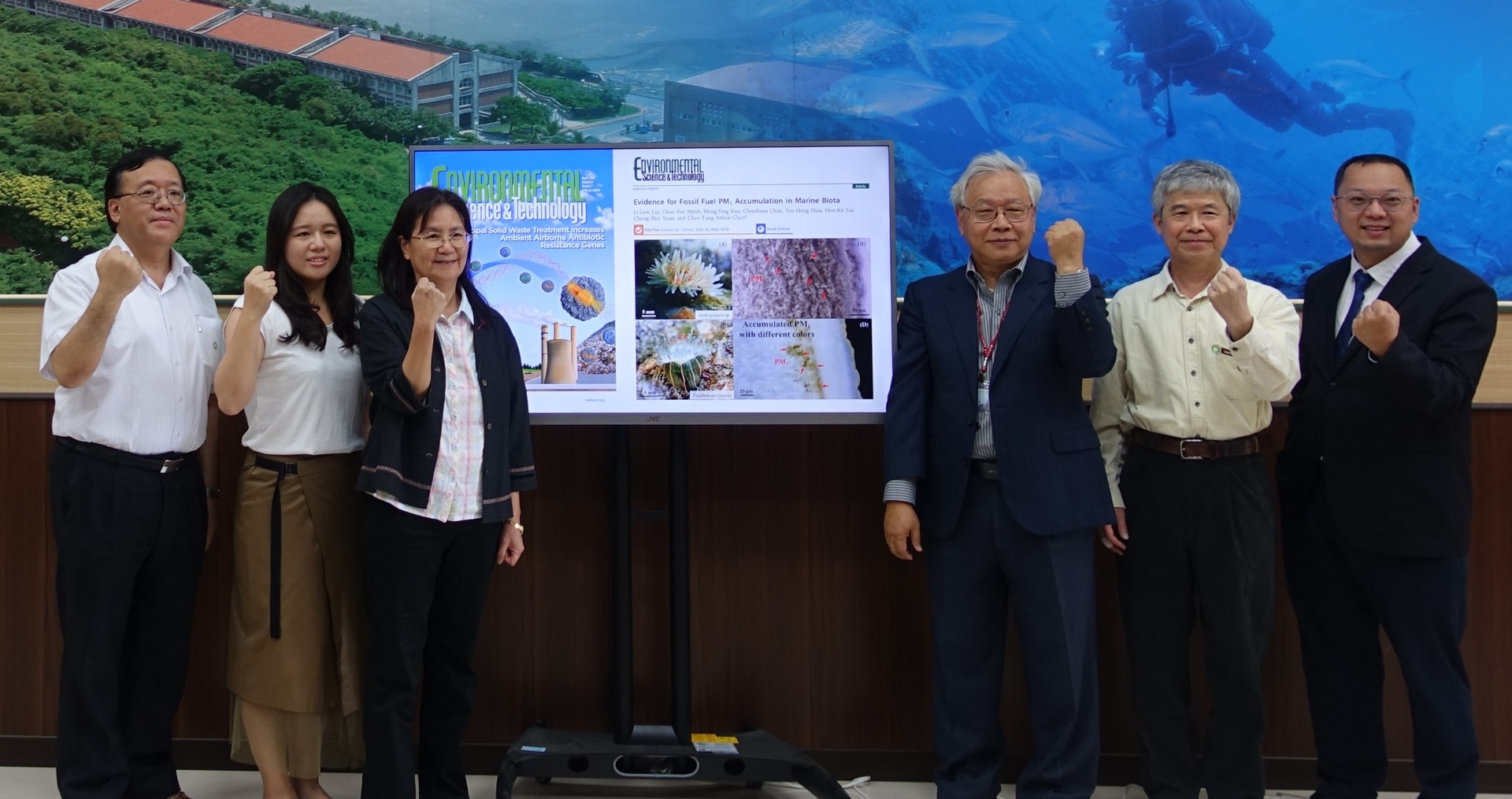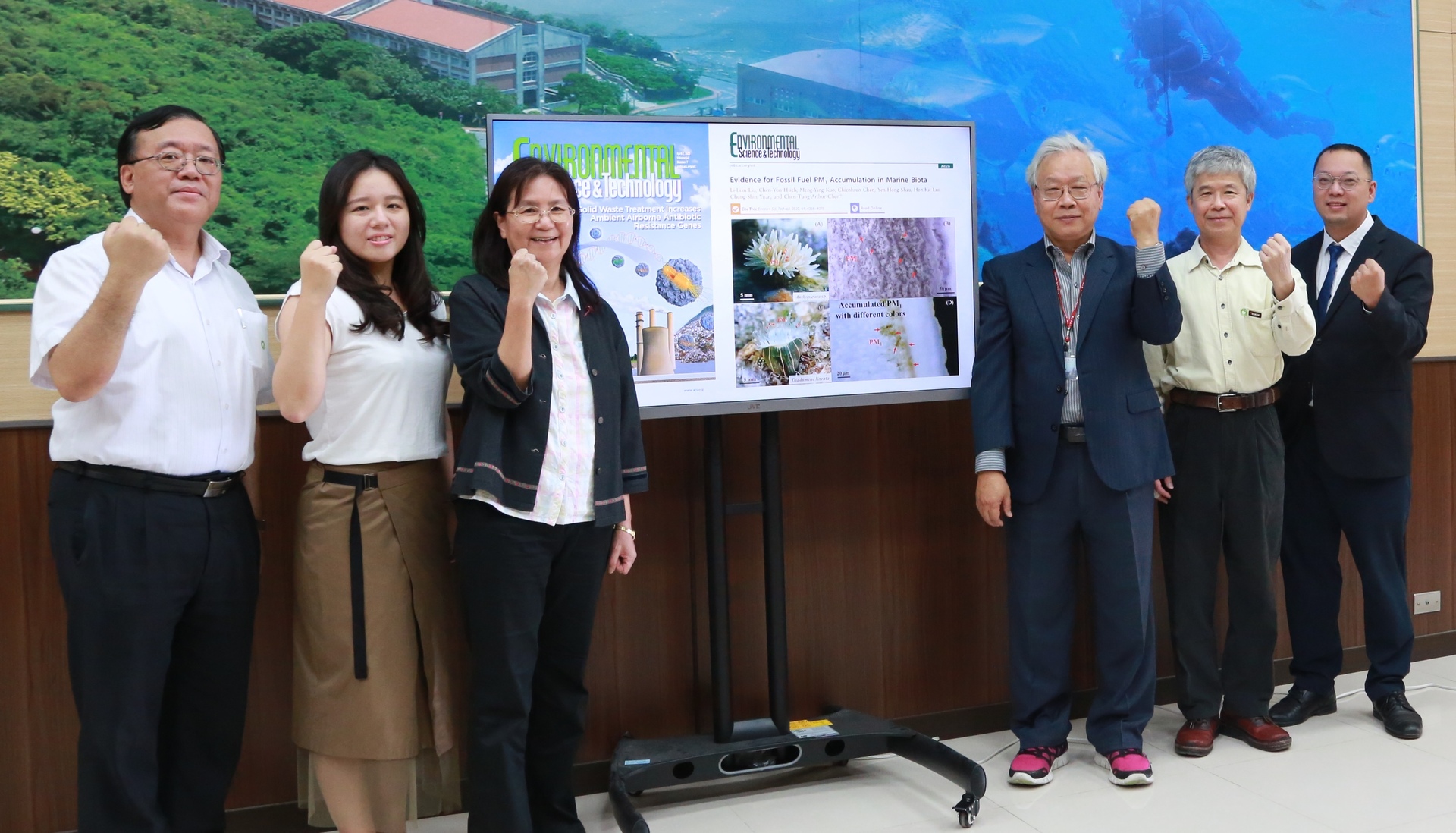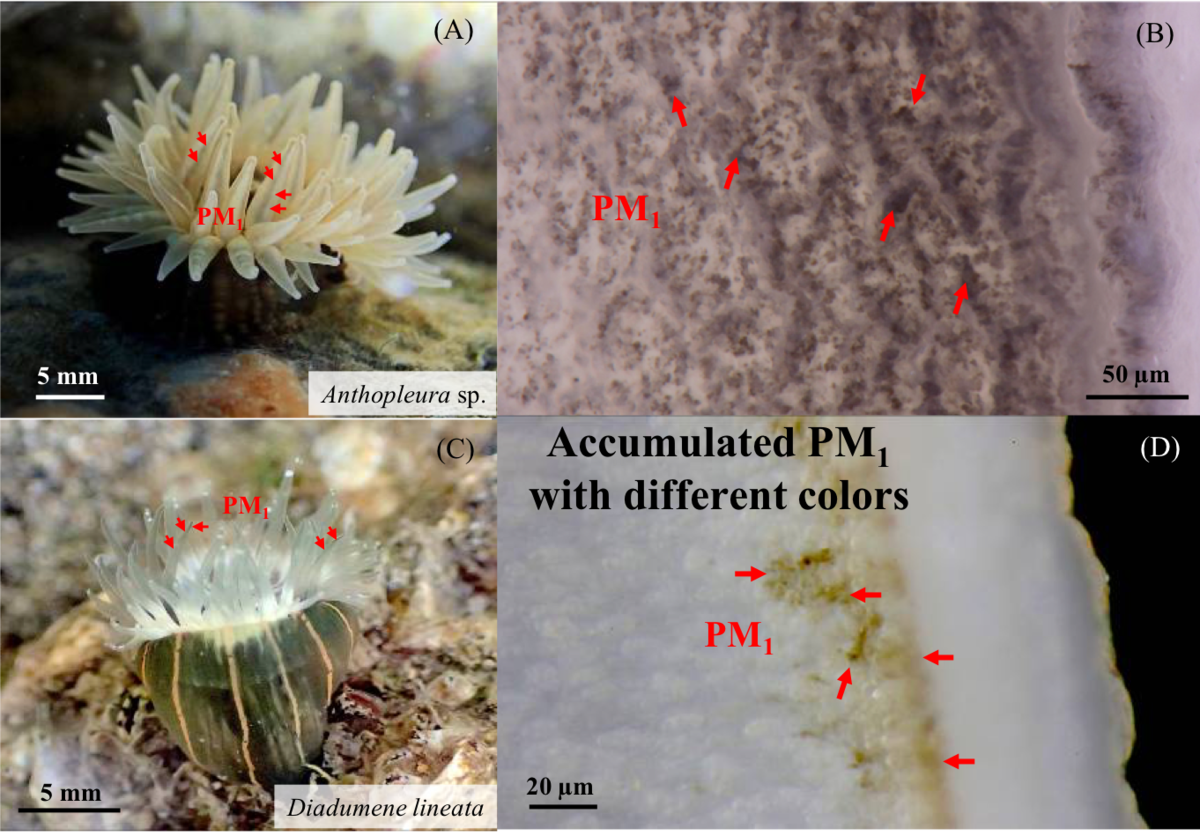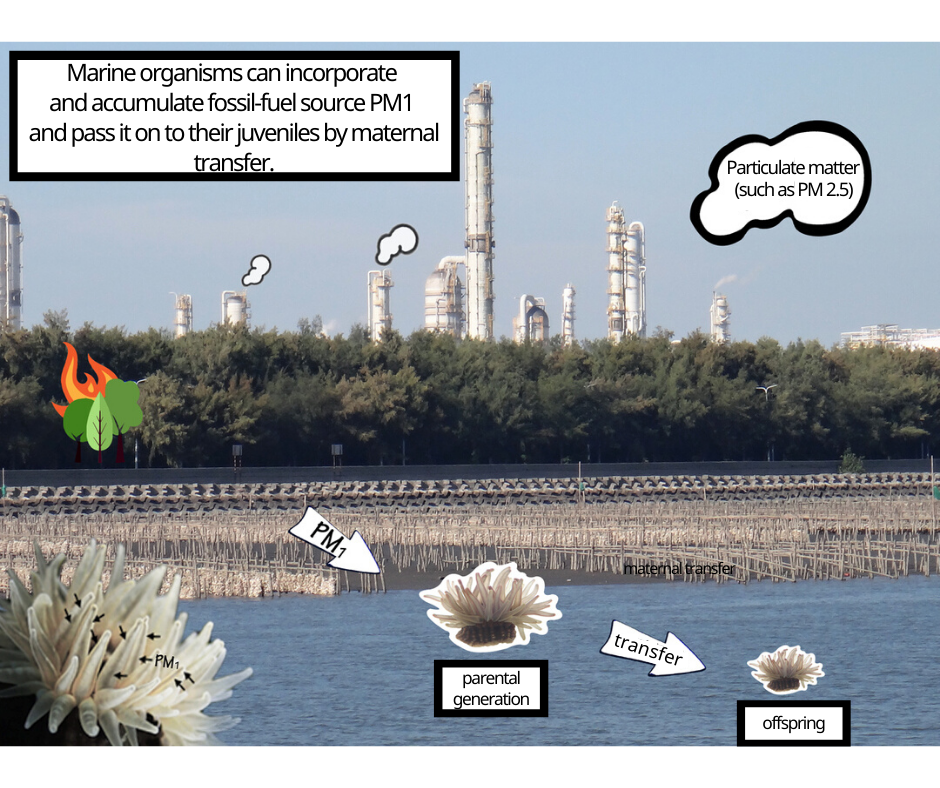NSYSU research team is the first to prove the presence of fossil-fuel PM1 in marine biota




PM1 (particulates with a diameter of about 1 μm) from anthropogenic activity does not only cause worldwide air pollution but also enters the oceans as suspended particulates. However, its subsequent impacts on marine biota are poorly understood. The research team of Professor Li-Lian Liu and Distinguished Chair Professor Chen-Tung Arthur Chen of the Department of Oceanography, NSYSU, were the first scientists to prove that in wild environment, marine organisms can incorporate and accumulate fossil-fuel source PM1 and pass it on to their juveniles by maternal transfer. This exceptional finding was published in a top scientific journal Environmental Science & Technology. It shed new light on the transport of air-polluting particulate matter in the marine environment.
The representative of the research team Professor Li-Lian Liu said, that they spent nearly eight years on this research. An underwater volcano caused the formation of shallow-water hydrothermal vent in Kueishan Islet off the north-east coast of Taiwan, yet many sea anemones inhabit this acidic and toxic environment. “In the beginning, we noticed black particles in sea anemones that none of us had ever seen before. What is that? I asked a member of our team, Associate Researcher Dr. Chien-Hsiun Chen, and he had no idea either”. Later, the team conducted histological examination, elemental composition analysis, and carbon-14 dating (radiocarbon dating), often used in archeological research, and found that these “black particles” contain fossil-fuel source PM1 which is released from anthropogenic activities.
Furthermore, the research team found the presence of fossil-fuel source PM1 in sea anemones inhabiting marine environments ranging from the intertidal zone to a depth of 1 km. Sea anemones also transfer it to their juveniles. If the concentration of PM1 is high, the particles can be seen with the naked eye. “The particles have different colors: black, brown, or green. We doubt the color reflects the differences in their composition”. All in all, the bioaccumulation of PM1 in the organisms is similar to the persistent organic pollutants, methylmercury, and environmental hormones.
Professor Li-Lian Liu said that the oceans occupy 71% of the Earth’s surface. There is not much research concerning the impact of particulate matter on marine biota. This research resolved the inherent technical difficulties in obtaining particulates from biological samples and made a significant contribution to further research on the characterization of physical and chemical properties of the suspended particles, their fate in the natural environment, and their impact on the environment and organisms’ health. Most people are familiar with PM2.5, which is not only an indicator of poor air quality but also an important factor of global warming, and poses a threat to human health by causing allergies, diseases of the respiratory tract, and cardiovascular and cancer diseases. What has an even more serious impact on human health, is PM1, which has a diameter of less than 1 μm.
The members of the research team included Distinguished Chair Professor Chen-Tung Arthur Chen of the Department of Oceanography of NSYSU, Professor Li-Lian Liu, Assistant Professor Hon-Kit Lui, master program students Chen-Yun Hsieh and Meng-Ying Kuo, Professor Chung-Shin Yuan of the Institute of Environmental Engineering, Associate Professor Yen-Hung Hsiao of the Department of Marine Biotechnology and Resources, and NSYSU alumnus and Associate Researcher Dr. Chien-Hsiun Chen at Taiwan Ocean Research Institute, National Applied Research Laboratories.
Research paper: https: //dx.doi.org/10.1021/acs.est.9b06976
The representative of the research team Professor Li-Lian Liu said, that they spent nearly eight years on this research. An underwater volcano caused the formation of shallow-water hydrothermal vent in Kueishan Islet off the north-east coast of Taiwan, yet many sea anemones inhabit this acidic and toxic environment. “In the beginning, we noticed black particles in sea anemones that none of us had ever seen before. What is that? I asked a member of our team, Associate Researcher Dr. Chien-Hsiun Chen, and he had no idea either”. Later, the team conducted histological examination, elemental composition analysis, and carbon-14 dating (radiocarbon dating), often used in archeological research, and found that these “black particles” contain fossil-fuel source PM1 which is released from anthropogenic activities.
Furthermore, the research team found the presence of fossil-fuel source PM1 in sea anemones inhabiting marine environments ranging from the intertidal zone to a depth of 1 km. Sea anemones also transfer it to their juveniles. If the concentration of PM1 is high, the particles can be seen with the naked eye. “The particles have different colors: black, brown, or green. We doubt the color reflects the differences in their composition”. All in all, the bioaccumulation of PM1 in the organisms is similar to the persistent organic pollutants, methylmercury, and environmental hormones.
Professor Li-Lian Liu said that the oceans occupy 71% of the Earth’s surface. There is not much research concerning the impact of particulate matter on marine biota. This research resolved the inherent technical difficulties in obtaining particulates from biological samples and made a significant contribution to further research on the characterization of physical and chemical properties of the suspended particles, their fate in the natural environment, and their impact on the environment and organisms’ health. Most people are familiar with PM2.5, which is not only an indicator of poor air quality but also an important factor of global warming, and poses a threat to human health by causing allergies, diseases of the respiratory tract, and cardiovascular and cancer diseases. What has an even more serious impact on human health, is PM1, which has a diameter of less than 1 μm.
The members of the research team included Distinguished Chair Professor Chen-Tung Arthur Chen of the Department of Oceanography of NSYSU, Professor Li-Lian Liu, Assistant Professor Hon-Kit Lui, master program students Chen-Yun Hsieh and Meng-Ying Kuo, Professor Chung-Shin Yuan of the Institute of Environmental Engineering, Associate Professor Yen-Hung Hsiao of the Department of Marine Biotechnology and Resources, and NSYSU alumnus and Associate Researcher Dr. Chien-Hsiun Chen at Taiwan Ocean Research Institute, National Applied Research Laboratories.
Research paper: https: //dx.doi.org/10.1021/acs.est.9b06976
Click Num:
Share
